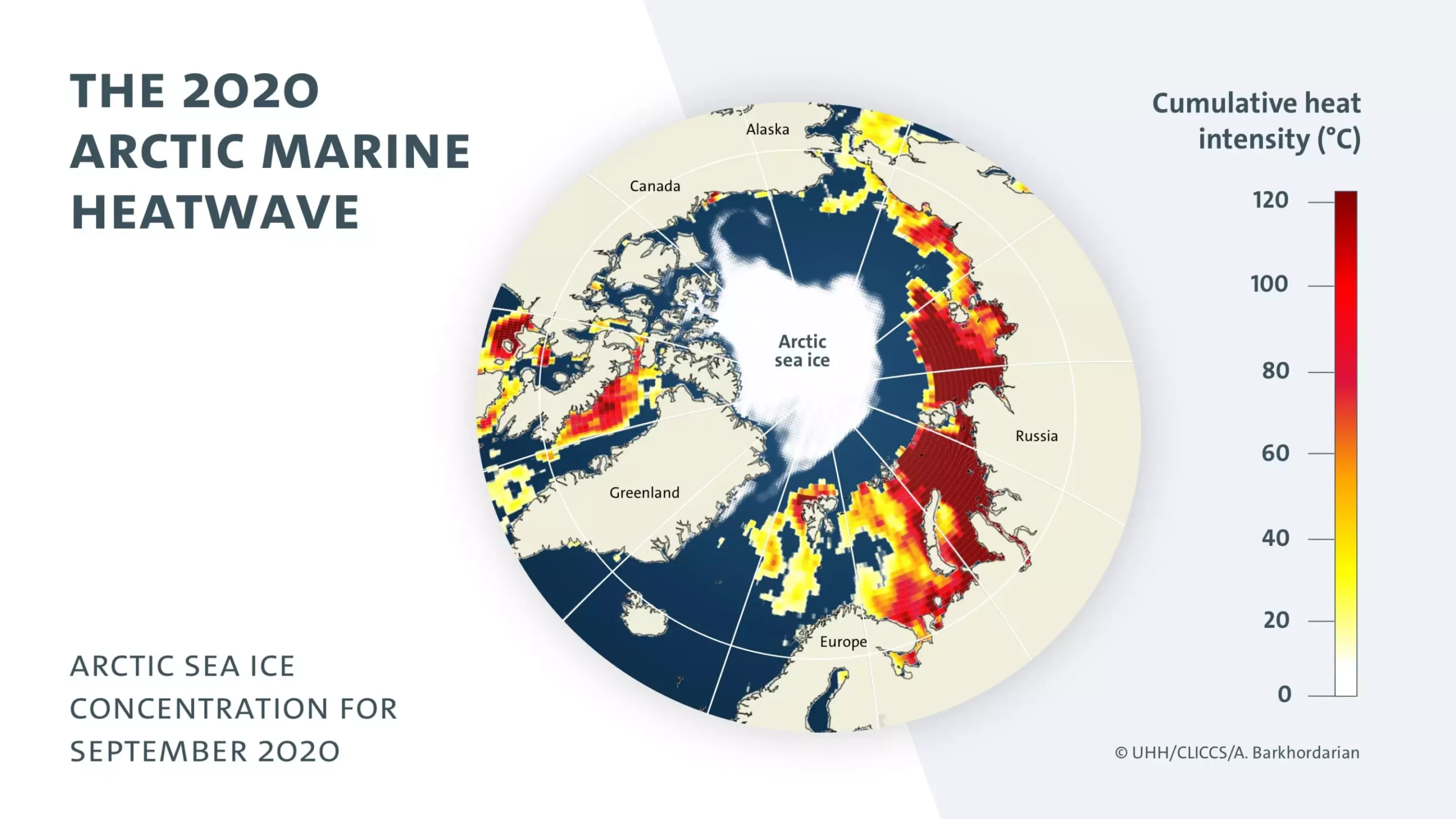Marine heat waves, characterized by a significant increase in ocean temperatures, have become a recurring phenomenon in the Arctic region due to higher anthropogenic greenhouse-gas emissions, according to recent research conducted by Dr. Armineh Barkhordarian from Universität Hamburg’s Cluster of Excellence for climate research CLICCS. This article explores the findings of the study, shedding light on the frequency and intensity of these heat waves and their potential consequences for the Arctic ecosystem.
Data published in the journal Communications Earth & Environment reveals a notable shift in Arctic conditions since 2007. In the period between 2007 and 2021, the marginal zones of the Arctic Ocean experienced 11 marine heat waves, with an average temperature rise of 2.2 degrees Celsius above the seasonal norm. These heat waves persisted for an average of 37 days. Of particular concern is the fact that since 2015, Arctic marine heat waves have occurred annually. The most severe heat wave to date in the Arctic Ocean occurred in 2020, lasting 103 days and reaching peak temperatures four degrees Celsius above the long-term average.
Barkhordarian’s team at the Cluster of Excellence CLICCS has calculated the probability of such heat waves occurring without the influence of anthropogenic greenhouse gases to be less than 1%. This calculation effectively narrows down the plausible climate scenarios in the Arctic. The study also provides groundbreaking evidence that heat waves are triggered by the early and rapid melting of sea ice after the winter season. As a result, significant heat energy accumulates in the water, reaching its maximum during July when solar radiation is at its peak.
Since 2007, the Arctic has witnessed a critical phase characterized by the depletion of thicker, multi-year-old ice and the increasing prevalence of thin, seasonal ice. This shift in ice composition is primarily responsible for the vulnerability of the Arctic to marine heat waves. Thin ice is less resilient and melts more rapidly, enabling solar radiation to warm the water’s surface. Consequently, the conditions for marine heat wave formation are met, leading to the significant temperature increases observed in recent years.
The consequences of marine heat waves extend beyond mere fluctuations in temperature. Dr. Barkhordarian emphasizes that the constant loss of sea ice and the warming of Arctic waters can have devastating effects on the fragile Arctic ecosystem. The potential collapse of food chains, reduction in fish stocks, and overall decline in biodiversity are among the many ecological impacts that may arise as a consequence of these heat waves. The Arctic region, renowned for its unique and sensitive environmental balance, is particularly susceptible to the negative consequences of climate change.
The findings of Dr. Barkhordarian’s study highlight the alarming prevalence of marine heat waves in the Arctic, which are directly linked to higher anthropogenic greenhouse-gas emissions. With annual heat waves becoming the norm and their intensity on the rise, urgent action is required to mitigate the impact of climate change on the Arctic ecosystem. The protection of Arctic sea ice and the reduction of greenhouse-gas emissions are vital for preserving the delicate balance of this remarkable region and avoiding the potential irreversible damage caused by the continued occurrence of marine heat waves.


Leave a Reply